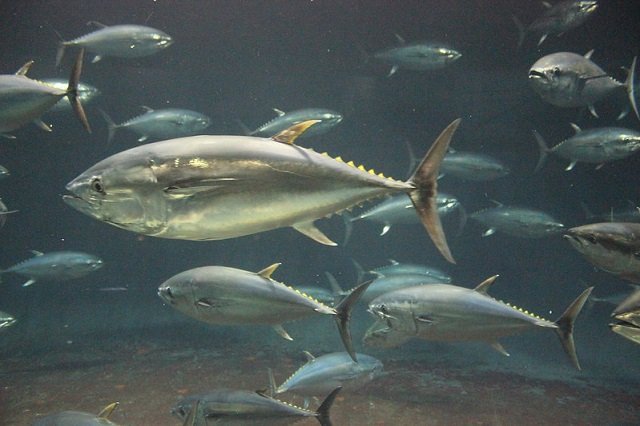Currently, there are several certification systems that are being implemented in aquaculture operations; however, welfare plays a relatively small role in almost all schemes.
According to experts, a welfare-focused assessment system that can be applied uniformly is needed to regulate animal welfare assessment in aquaculture and to help consumers make informed decisions.
Heather Browning from the London School of Economics and Political Science, published a study that aims to provide some of the guiding principles that should underlie the development of a welfare assessment system for aquaculture certification schemes.
The paper discusses some of the certification and assessment schemes, highlighting the main limitations that need to be addressed, before going on to describe recommendations for a welfare assessment process for aquaculture.
Certification schemes
There are a variety of different certification programs used in aquaculture. Some of the most prominent include the Global Seafoods Alliance Best Aquaculture Practices (BAP), Global Agricultural Practices Aquaculture, the Aquaculture Stewardship Program, and the UK’s RSPCA Assured program.
One of the first problems is that almost all of these programs have wellness as only a small part, along with other considerations such as environmental impact, social impact, and food safety. Only the RSPCA Assured program focuses on wellness.
Second, it’s hard to find the details in most certification schemes. Even when specific certification requirements are provided, they often refer to “appropriate” or “adequate” conditions, or “minimal” or “unnecessary” stress and/or suffering, without specifying exactly what they are.
Finally, the biggest limitation of certification schemes is that they are made up almost entirely of input measures. It is common to divide animal welfare measures into two categories, often called “input” and “outcome”, “environmental” and “animal”, or “cause” and “effect” measures.
Evaluation frameworks
Numerous frameworks exist to assess welfare in aquaculture.
Stay Always Informed
Join our communities to instantly receive the most important news, reports, and analysis from the aquaculture industry.
The first framework is the SWIM (salmon welfare index) model, which was developed for salmon, but has been adapted for sea bass and lumpfish. There are also the FISHWELL models for salmon and trout, and the MyFishCheck system, which is a more general model.
These systems have the advantage of being fully focused on well-being, using a range of indicators for different aspects of well-being, in order to generate an overall well-being score.
However, there are some limitations to these systems:
to. The first issue is how the scores are aggregated into a final grade, particularly how the different components are weighted.
b. The second problem is that they provide an incomplete picture. That is, although they measure physical health, they take little account of psychological well-being.
c. The third problem is whether to set appropriate thresholds. This applies to both certification schemes and well-being assessment frameworks.
Recommendations
Based on the considerations discussed in the study, Browning offers the following recommendations to improve the practice of welfare assessment in aquaculture: completeness, validity, feasibility, and setting reasonable thresholds.
Pending issues
Just as there are some limitations of current welfare assessment methods, there are some general issues associated with welfare assessment in aquaculture.
Species diversity
The problem is that the species used in aquaculture are extremely diverse. In this sense, sufficient knowledge is required for each species, both about its requirements for good breeding and management, and about the measurement indicators for its well-being.
Assessment and certification systems
There are also problems specifically related to assessment and certification systems.
These are general issues that arise for all current animal welfare certification schemes, but with the relative newness and expansion of aquaculture, they have particular significance in this context.
Conclusion
“It is important to ensure the availability of high-quality welfare assessment schemes to assess the welfare of animals in aquaculture and to promote and maintain high welfare standards,” concludes the researcher.
In her study, she discusses some limitations of current methods and highlights desirable features to improve the practice of welfare assessment in aquaculture.
The study was funded by the European Research Council (ERC) under the European Union’s Horizon 2020 research and innovation program.
Reference (free access)
Browning Heather. 2023. Improving welfare assessment in aquaculture. Front. Vet. Sci., 28 February 2023, Sec. Animal Behavior and Welfare, Volume 10 – 2023 | https://doi.org/10.3389/fvets.2023.1060720
Editor at the digital magazine AquaHoy. He holds a degree in Aquaculture Biology from the National University of Santa (UNS) and a Master’s degree in Science and Innovation Management from the Polytechnic University of Valencia, with postgraduate diplomas in Business Innovation and Innovation Management. He possesses extensive experience in the aquaculture and fisheries sector, having led the Fisheries Innovation Unit of the National Program for Innovation in Fisheries and Aquaculture (PNIPA). He has served as a senior consultant in technology watch, an innovation project formulator and advisor, and a lecturer at UNS. He is a member of the Peruvian College of Biologists and was recognized by the World Aquaculture Society (WAS) in 2016 for his contribution to aquaculture.




